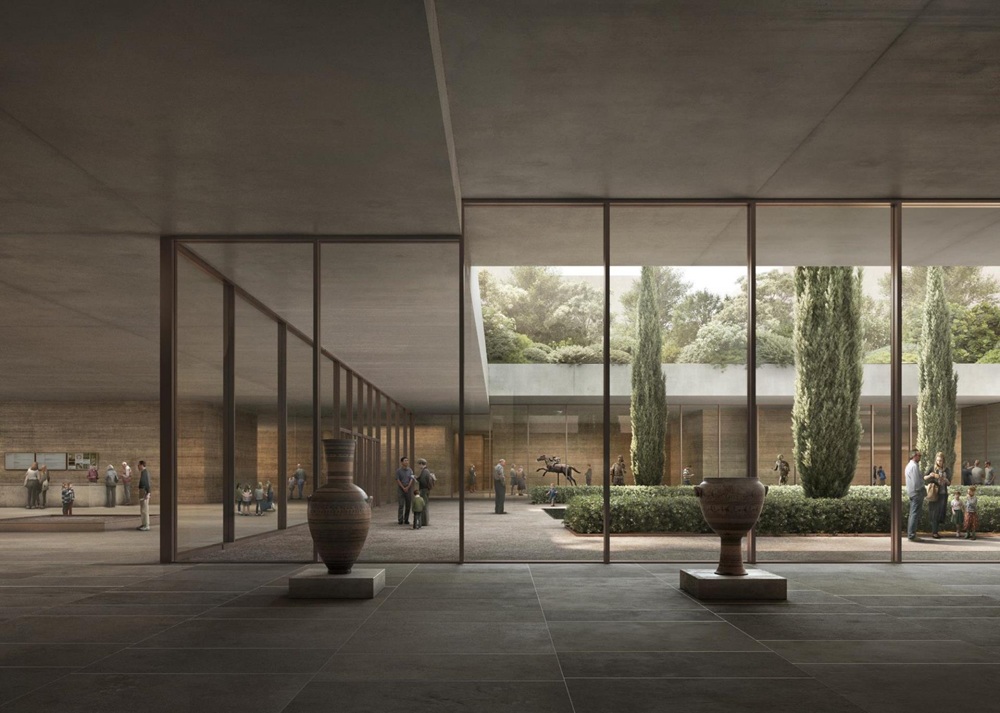
The Council of Museums of the Ministry of Culture unanimously approved the final museological study, which plans and organizes the new exhibitions of the National Archaeological Museum (NAM) and the Epigraphic Museum (EM) that are being developed within the same building complex. These are two extremely important museums: the National Archaeological Museum is an unparalleled treasure trove of ancient Greek art, and the Epigraphic Museum is the only museum of its kind in the world. The project to re-exhibit, expand, and upgrade the National Archaeological Museum and the Epigraphic Museum is currently in the design phase, based on the architectural proposal by Chipperfield-Tompazis Architects. All the necessary studies are being carried out with a donation of €40,000,000 from Spyros and Dorothy Latsis, in memory of their parents, Ioannis and Erietta Latsis.
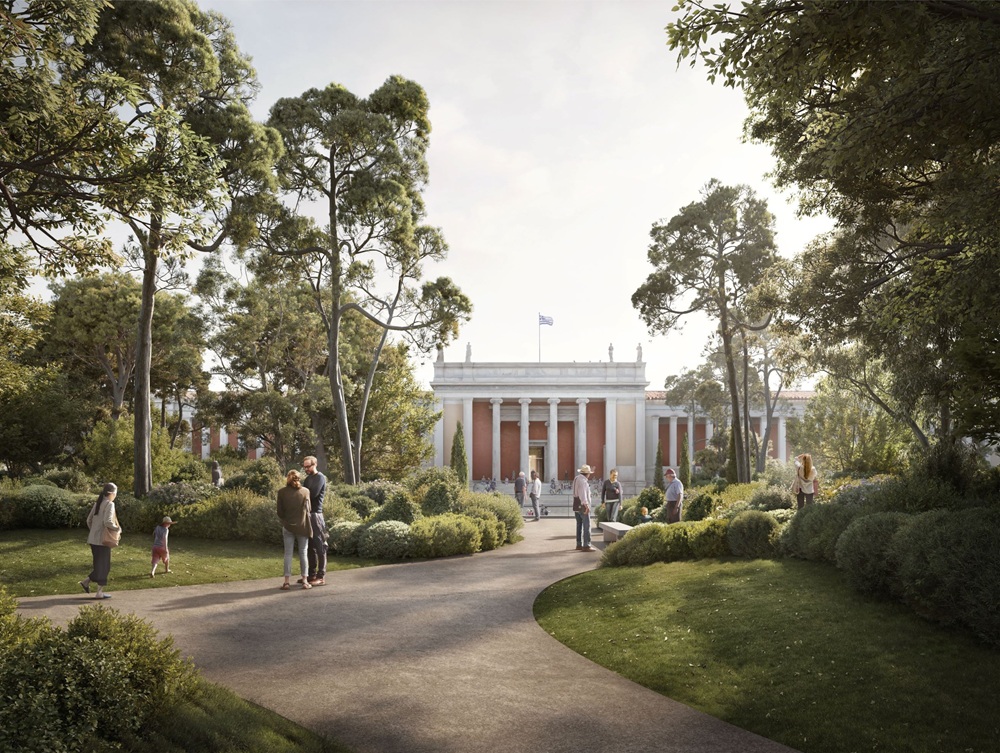
Photorealistic depiction of the exterior of the National Archaeological Museum
National Archaeological Museum
The National Archaeological Museum (NAM) hosts the largest and most important collection of ancient Greek art in the world. The re-exhibition of the Museum includes both the existing building-monument and the new spaces of the extension, utilizing part of the collections already on display, new material from the Museum’s warehouses, as well as antiquities provided by Ephorates of Antiquities and other museums of the Ministry of Culture, in order to fully present the narrative and represent the entire Greek territory. The new building is developed in the garden in front of the historic building and the main entrance is moved to the level of Patission Street, strengthening the Museum’s relationship with the city. Two underground levels house various functional units: On the first floor are the public service areas, such as a visitor gathering area, ticket offices, cloakroom, information, restrooms, restaurant and café with independent entrance, bookstore and shop, amphitheater, educational program and temporary exhibition areas. Part of the first level and the entire second level are occupied by the permanent exhibition areas, creating a continuous flow for the visitor, which ends in the neoclassical building for the continuation of the exhibition narrative. A green space accessible to all is created on the roof of the new building.
The new museological approach moves away from the presentation “by Collections” and narrates the evolution of Greek culture, through thematic units and different levels of reading (main route, satellite axes, focused stories). The goal is a participatory, accessible and attractive museum that unites research, learning and entertainment with the help of various storytelling tools. The narrative becomes unified and coherent from the Neolithic to Late Antiquity, new routes are created for different groups of audience (e.g. families), the spaces are expanded and new or stored collections are presented (e.g. Minoan, Antikythera). Existing and unexhibited finds, loans from other institutions, as well as contemporary works of art are utilized.
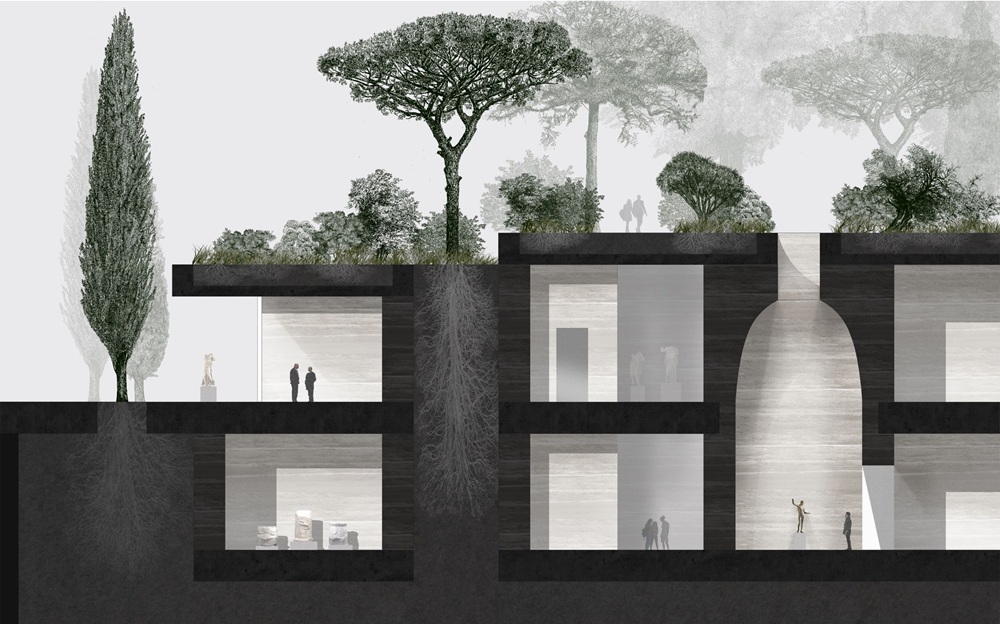
Radiograph of the cavernous exhibition spaces below the surface of the NAM garden
The exhibition is organized into two main themes: The first, “History and Collections of the Museum”, presents the history of the EAM, its architectural and institutional history, as well as the enrichment of the collections through donations and special collections (Stathatos, Karapanos, Vlastos-Serpieris, Cypriot, Egyptian, etc.). It is developed in “islands” of historicity in the exhibition spaces. The second, “Ancient Greek Civilization: History, Art and Society”, follows a chronological course through 13 sections, presenting the evolution of ancient Greek art as part of culture and society.
The exhibition narrative operates on three levels: Central axis: a basic chronological route with emblematic works. Satellite axes: thematic sections that delve into specific themes. Focused stories: smaller narratives that enrich the experience. Finally, a prologue and epilogue are added to the ground floor of the new building, in order to offer a complete museum experience and frame the overall rationale of the exhibition.
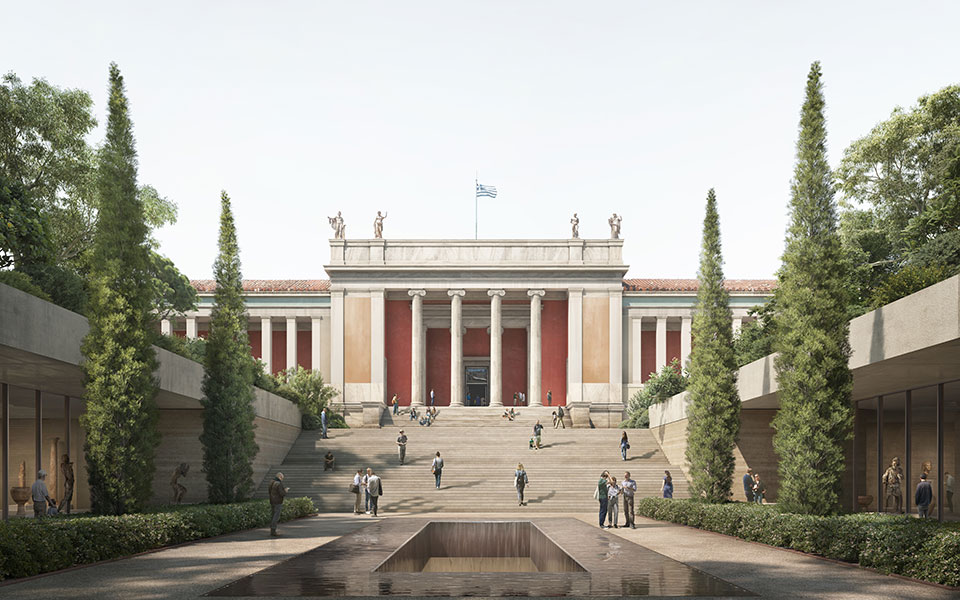
Five different routes are planned: A short basic route (245 objects) for visitors with limited time/interest, a longer route for those who dedicate more time and have a greater interest in archaeological heritage, a specialized and in-depth route for visitors with special interests, a targeted thematic route for special interest groups (e.g. schools, students), a family route, designed for children aged 5–12 and their companions, so that they can creatively experience the experience, with selected exhibits that enhance dialogue and interaction.
The re-exhibition of the National Archaeological Museum utilizes a wide range of interpretive media, combining conventional and digital practices to cover different visitor profiles. Texts at seven levels of information, maps, chronologies, visual material, as well as digital applications (projections, interactive stations, games, augmented reality, digital guides) are foreseen. Also, staged environments will be created and tactile exhibits will be integrated, with attention to accessibility (e.g. Braille).
Epigraphic Museum
The Epigraphic Museum hosts the largest collection of ancient Greek inscriptions in the world, with a total of 14,078 inscriptions in stone, clay and copper, dating from the 8th century BC to the modern era. The Museum’s renewed exhibition focuses on highlighting the inscriptions, emphasizing their access and understanding by different audiences. The presentation is experiential and interactive, facilitating the consolidation of the content. The central idea of the re-exhibition of the Epigraphic Museum is “History and the Greek language through stones”, highlighting the importance of inscribed monuments for understanding the life of the ancient Greeks and the evolution of the language. The Museum’s goal is to structure and present its new exhibition narrative in a modern, experiential and participatory way, in order to make the difficult-to-understand inscriptions accessible and to reach more and new audience groups.
The exhibition narrative is structured around four axes: 1. The Epigraphic Museum, a Stone Library – the history and identity of the Museum 2. Reading the Ancient World – the contribution of inscriptions to history, language and the humanities 3. Inscriptions and History – the main body with exhibits presented chronologically and thematically 4. Diachronic Thematic Unit – focusing on the political reform of Cleisthenes and Athenian democracy. The themes of the Museum are developed in 19 units, 58 sub-units and 33 individual themes or micro-stories, while 762 inscriptions and other exhibition material are also presented. Modern interpretive tools are utilized, such as smart applications, 3D copies and prints of inscriptions, tactile exhibits and other aids for people with visual impairments, various digital applications from projections, interactive games and augmented reality applications, etc., ensuring access and understanding for all visitors.
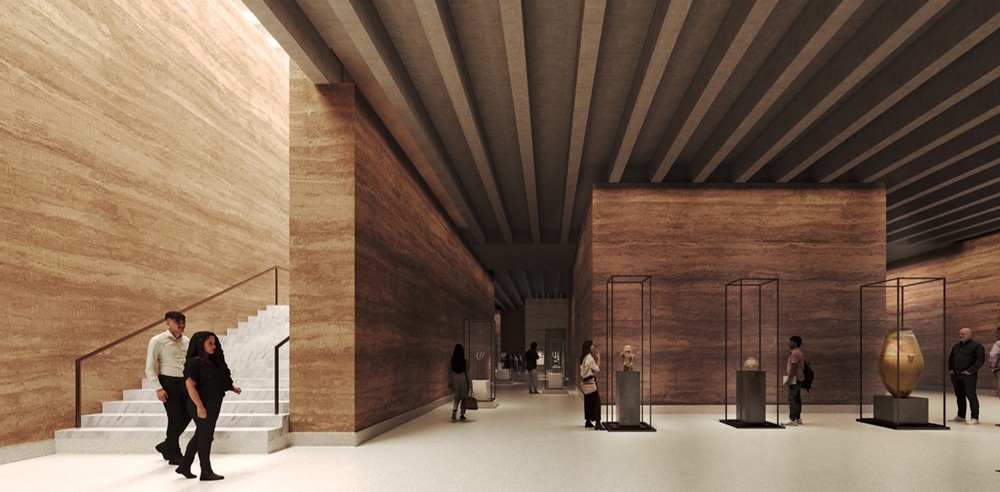
After the modernization and expansion of the Museum, the exhibition spaces have doubled, reaching 1,500–1,600 sq m. indoors, while the outdoor exhibition occupies an additional 900 sq m. Of the 14,078 inscriptions in the collection, 647 monuments will be exhibited (474 indoors, up to 200 in the courtyard), including 23 “landmark” exhibits and special tactile monuments. The majority come from ancient Athens, while other regions of Greece and Asia Minor are also represented, as well as inscriptions in Latin and other languages (Phoenician, Hebrew, Ottoman). The Museum’s goal is to help the visitor understand the importance of writing in human history, to learn about the ancient Greek language through official and everyday texts, and to learn about the political organization of Ancient Athens and other city-states.

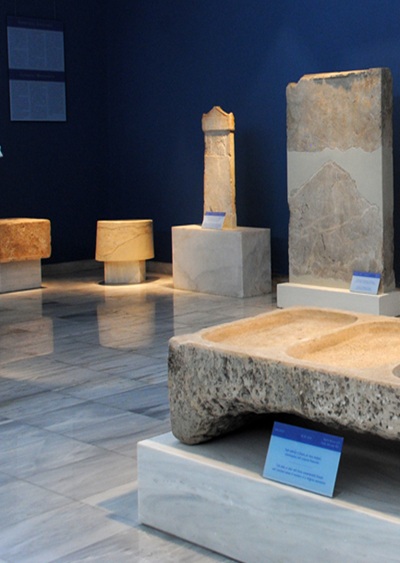
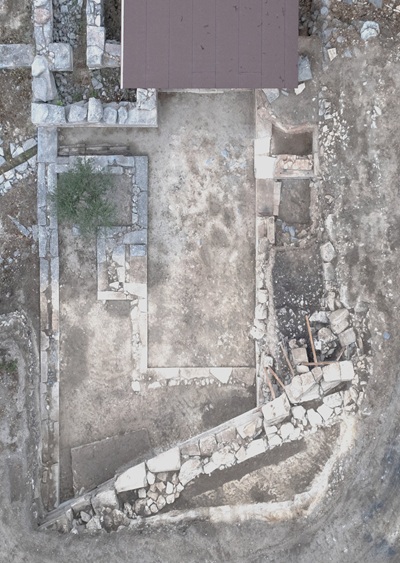
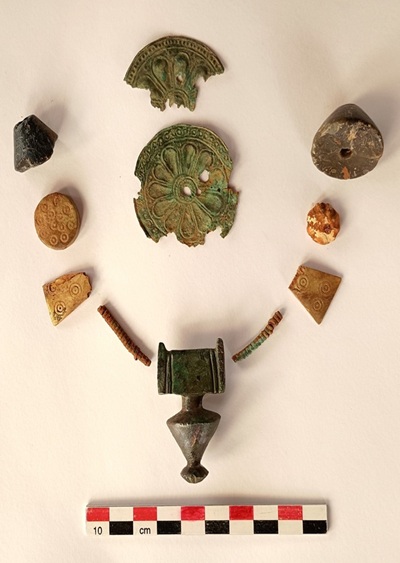
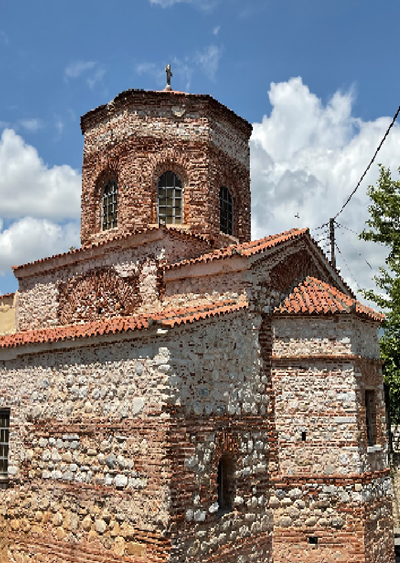
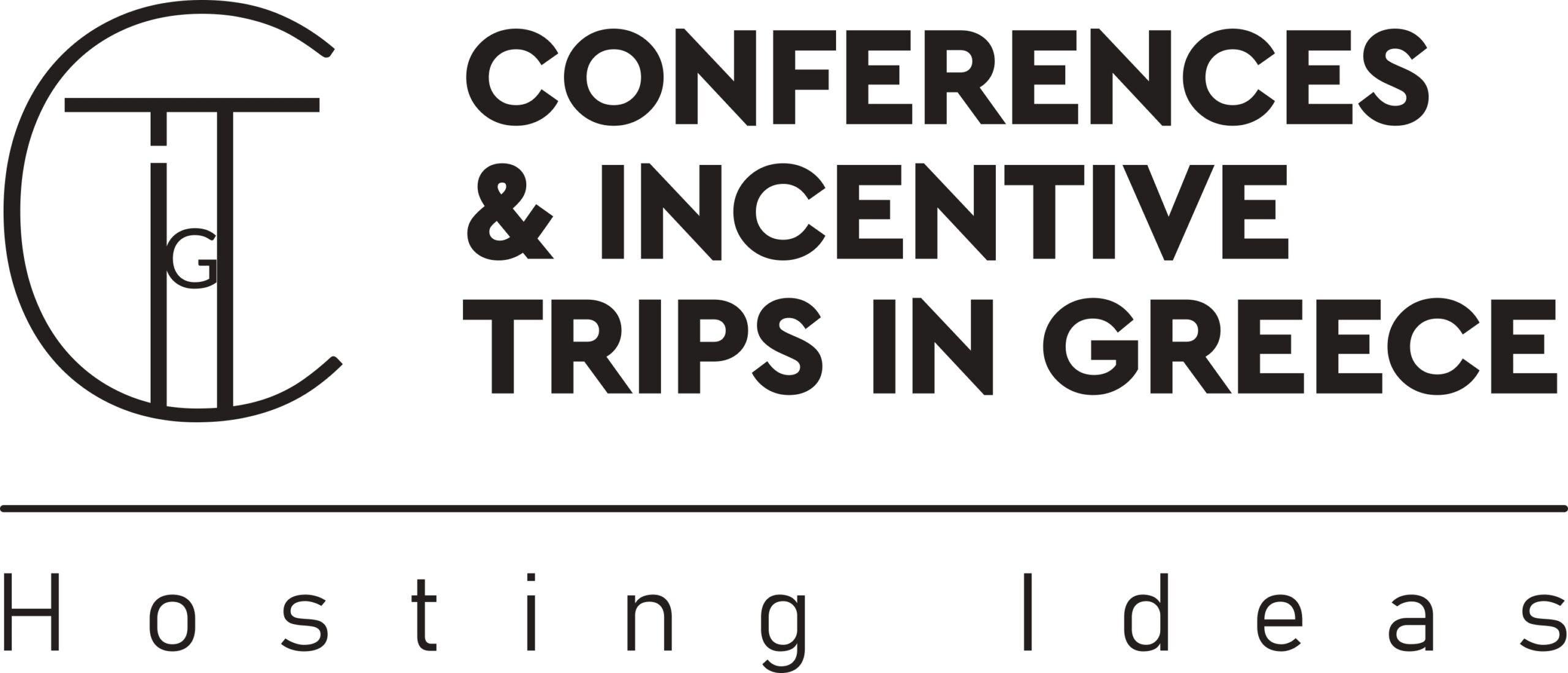
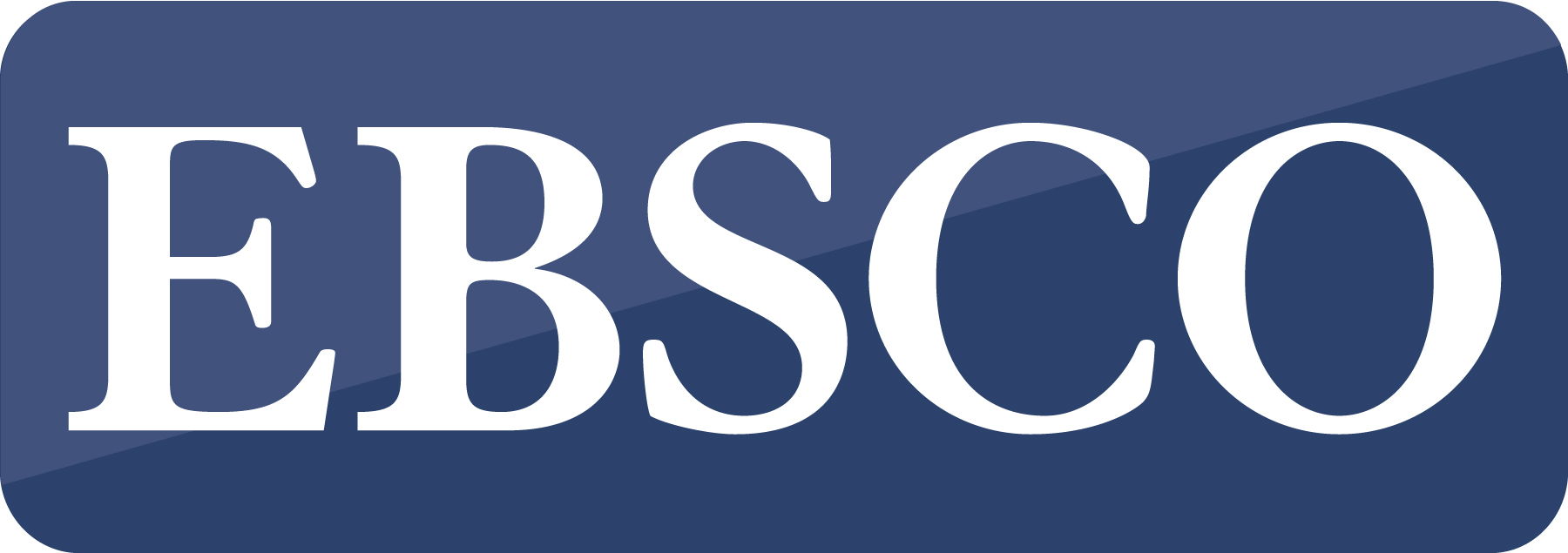
Leave A Comment